
Ai Weiwei may not yet be a household name, but he’s inching closer. Anyone who follows events in China or the international art world has heard of this outspoken artist based in Beijing who shows provocative conceptual work in museums and public spaces around the globe, who helped design the controversial ‘Bird’s Nest” stadium for the 2008 Olympics in Beijing, and who (as of this writing) was recently jailed for 3 months following years of an increasingly amplified critique of the Chinese government through his blogs and tweets.
Social Media may be his greatest art form…
Ai Weiwei’s reputation as an artist is enhanced by his multi-disciplinary talents. He has experimented with conceptual art, sculpture, architecture, documentary photography, and filmmaking. But it is his manipulation of social media that has pushed his art-making to new levels and built a mass audience. And part of that effort is his use of social media as a megaphone for his political voice. He has spoken out about Chinese corruption and malfeasance, the lack of democracy, accountability and freedom of speech.
When Ai took up the cause of the children killed in shoddily built schools during the devastating Sichuan earthquake in 2008 he mobilized a group of investigators via the internet to visit villages and document the names and ages of the children killed in their classrooms. The list grew to more than 5,000. For supporting the parents’ demand for accountability from local officials and contractors Ai was beaten up by police. In typical Ai Weiwei fashion, he posted images of his arrest and his battered face on his blog for the world to see. Later, when he traveled to Germany, he had brain surgery to address the hemorrhaging that resulted from this beating. Once again he posted images from his hospital bed.
In June, 2009, on the eve of the twentieth anniversary of Tiananmen he dared to address that taboo subject in his blog:
“Let us forget June Fourth, forget that day with no special significance…People with no freedom of speech, no freedom of the press and no right to vote aren’t human, and they don’t need a memory. ..Forget those soldiers firing on civilians…the city and the square that didn’t shed tears. Forget the endless lies, the leaders in power who insist that everyone must forget, forget their weakness, wickedness and ineptitude. For our own survival, let us forget.”
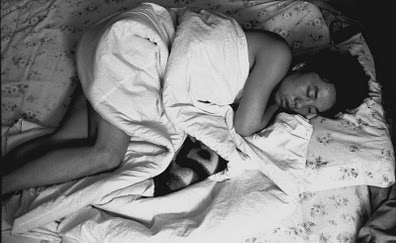
Last winter Ai was in the news again when authorities in Shanghai bulldozed an expensive studio he had built there. But it’s not just when Ai Weiwei himself was making news that Western reporters interviewed him. For years, the New York Times has quoted him in articles dealing with a vast array of issues in China. Why? Why this singular voice? Perhaps it had something to do with the fact that he is fluent in English, or that he is particularly thoughtful in interpreting Chinese culture and frames criticisms of the Chinese government in a simple, direct “western” vocabulary that appeals to us.
A recent show at the Asia Society in New York City helps to reveal just how Ai Weiwei may have nurtured this voice. Many of his followers will be surprised to know that Ai Weiwei spent ten years in New York from the early 80’s to the early 90s. During that time he took some 10,000 photos. Three Shadows Gallery in Beijing worked with Ai to whittle them down for a book and exhibition: – Ai Weiwei: New York 1983-1993.
Warm, intimate snapshots that work better in book form…
My first reaction to these 227 black and white photos in the Asia Society exhibit — individual shots or sequences on contact sheets blown up with wide white matting and jammed together on the walls — elicited the question: if he wasn’t already famous, who would look at these? They are mostly snapshots, not really adding anything to the vocabulary or dialogue among photographers. But it is the 316 page corresponding book of photos – with the same selection – accompanied by introductory essays and an interview with Ai Weiwei — published by Three Shadows Gallery in Beijing and Chambers Fine Art in New York that feels like the more appropriate format for this mostly intimate, personal collection of snapshots. Lingering over the book, my reactions warmed and eventually changed.

See my author’s website: www.gailpellett.com for info about my new book, Forbidden Fruit—1980 Beijing, a Memoir, pub. by Van Dam, Feb. 2016.
I met Ai Weiwei not long after he arrived in New York City. I had worked at Central Broadcasting in Beijing for a year in 1980-81 and had met several of the leading artists in the dissident group Xing Xing or Star Star. In the fall of 1980 they were granted space in the National Gallery for an “unofficial” show of this anti-establishment work, but it would be their last. Just as the government had shut down the New Democracy or Beijing Spring movement in 1979, it was now closing doors on the artists and writers who had wedged a new opening to challenge the status quo of formulaic art. Many in the “Stars” group had been activists in that New Democracy Movement of the late 70s and were heartbroken and angry when the government jailed it’s eloquent spokesman and leader, Wei Jingsheng. Ai Weiwei was among the youngest of “the Stars” and his youthful hopes for transformation in China were now dashed. He was among the first to leave China in 1981.
During the next few years many of “ the Stars” headed West…or East. To Tokyo, Paris, London and New York. Ai was the baby among the New York group. In 1986, I interviewed him along with several other of these ex-pat artists for a lengthy feature in the Village Voice: Is There Art After Liberation? Mao’s scorched flowers go West. Most of “the Stars” were victims of the Cultural Revolution. Some were participants as Red Guards. Ai had witnessed the severe punishment of his parents who had been labeled Rightists. His father, Ai Xing, China’s most famous living poet, had been banished to the desert of Western China where he was assigned to clean latrines.

In the early 80s these mostly self-taught, self-exiled artists were searching and exploring, getting a taste of western life and art, trying to make sense of art making in the global centers of culture and power. In December of 1985, they wrote a manifesto together arguing that Chinese artists and intellectuals must “help the people of China to shed the past and transform into a society of free and creative spirits.”
“We are the torched flowers of China” said Ai when we conversed back in 1986. It’s a reference to the Hundred Flowers Movement of the late 50’s when the government encouraged artists and intellectuals to come forward with their concerns and criticisms of the new China. When they did they were severely punished.
By the time I interviewed Ai he had already studied English at UC Berkeley and U Penn, then dropped out of Parsons School of Art & Design in New York where he had received a scholarship. This New York photo exhibition and book collection picks up with the young exile living in Williamsburg, Brooklyn in 1983. He’s standing in front of a bodega or deli with Scott Paper towels arranged in rows in the window, It’s an old New York immigrant neighborhood. And here is one of it’s newest arrivals, slender and young…26 years old.
Ai soon moved to the East village in Manhattan (or what was in those days called Loisida – for Lower East Side – in a Spanglish rendering identifying its Puerto Rican and Dominican constituents). Many of the photographs are taken in his East 3rd Street apartment between Avenues A and B. These photos are mostly snapshots of Chinese friends. Each photo has a very brief label identifying the person and location.
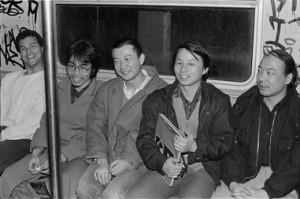
To most viewers these snapshots of strangers might get tedious – a pretty girlfriend sitting at a table, young men caught in relaxed poses, in socks or underwear, often draped on one of the mattresses jammed into his tiny apartment. For the “educated” viewer, however, these casual snapshots hold some amusement and delight, for here are a circle of China’s now famous artists, writers and musicians in their younger New York ex-pat moment. Tan Dun, the composer, Hu Yongyan, the conductor, and Chen Kaige, the filmmaker are just a few documented here. Ai’s camera captures their bohemian life-style outside of the mainstream art, music and literary worlds in New York City.
Snapshots of exiles and ex-pats in their New York bohemian moment…
These are not great photographic portraits. Ai is simply snapping pictures. But the manner of capturing their postures indicates how intimate and familiar these “subjects” are to the photographer. One genre I particularly like is the bodies draped across the floor mattresses on 3rd Street. The postures are untroubled, the relationship with the photographer is intimate, warm and trusting. The photo of Ai Weiwei’s brother, Ai Dan, sleeping, is particularly tender…and beautiful.
Another category — that sometimes charms — is the self-portrait. Of course, such photos have been snapped by everybody who picks up a camera to begin exploring its possibilities but is hard up for a subject – self-portraits, reflections in mirrors and objects. But here and there is a particularly arresting variation. My favorite self portrait is taken when Wang Keping – of the Star Star group – is visiting from Paris and is asleep on a mattress in the cramped East 3rdSt apartment while Weiwei is standing over him dressed in a tuxedo and underpants. He looks curiously at the camera while Keping dreams below him. It’s an interesting twist on the power dynamics of what may have been their relationship since Keping was considered the leader of the Star Star group.

If most of these photographs add nothing to the conversation among art or documentary photographers, an interview with Ai Weiwei included with the book of these photos reveals that he had no desire to be part of that dialogue.
“I just had the camera and took pictures. There’s not too much thought in it…Composition, lighting, these classic photographic qualities did not interest me. All I’m interested in is point, push down and a lot, repeatedly…
Duchamp and Sunflower Seeds…
We see very few hints of Ai’s exploration of the world of art. He documents a visit to MOMA focusing on the work of Andy Warhol and Marcel DuChamp, suggestive for his direction as an artist.
In a snapshot from another day called “Profile of Duchamp, Sunflower Seeds, 1983” he photographs a coat hanger twisted to reveal a facial profile that is placed on a wooden surface filled with sunflower seeds. Art historians will see precursors to some of his later work in this image. His huge show at the Tate in London earlier this year whereby his staff of artisans sculpted millions of sunflower seeds from porcelain to scatter on the floor is direct evidence of this connection. In 1985, when I interviewed Ai Weiwei for the Village Voice article, he was walking around with a book about Marcel Duchamp. If we look carefully at the coat hanger profile we can see it closely resembles Duchamp’s self-silhouette profile from 1958. New York based artist, Roland Flexner, who knew Ai during his New York period, reminds me that the coat hanger is also a reference to Duchamp’s coat rack called Trebuchet or Trap from 1917/1963.
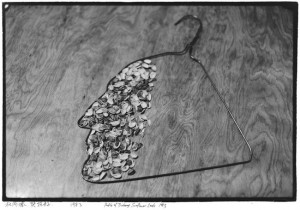
In an introductory essay to the book collection of Ai’s photos, John Tancock suggests that Ai’s self-portrait standing on a chair in the nude with his genitals coyly tucked away…might be a conversation with Duchamps’ avatar, Rose Selavy. As Selavy, Duchamp dressed as a woman – a very attractive one at that – for Man Ray’s camera. “Rose Selavy” was also a pun on the expression “Eros, c’est la vie.” Roland Flexner agrees. “I also think that Ai is imitating or influenced by another photo. It is by Man Ray of Duchamp and Madame Rene Clair in the nude.” In this 1923 photo both are teasingly covering their genitals. I see Ai’s curious and coy pose for his self portrait also as a break from the puritanical repression nurtured in China at that time.
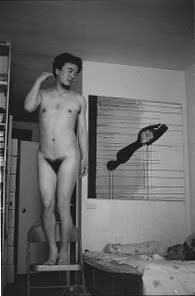
A series of snapshots indicate Ai was collecting men’s shoes, but we don’t see any photos of his exhibit – OLD SHOES, SAFE SEX in Ethan Cohen’s Art Waves gallery in New York in 1988. If my memory can be trusted, I recall him creating a shoe with two toes implying confusion about coming and going. But there are not many hints in this photo collection of his art-making in New York. No, instead we are getting hints of the making of an artist. His interview in the book collection explains why he dropped out of Parsons:
…”once I got in (to the school) I realized that art is really about your own motivation, your own passions, your own character. It’s nothing a teacher can teach you. They can guide you a little bit, but if you read a book – if you read art history – you can learn from there too.”
Ai’s focus begins to shift…outward…
Within a few years – by 1987 – Ai is taking snapshots of his Chinese friends in various locales around the city, but most particularly the East Village. In Laundromats, in front of one of the infamous little clubs of those years – the Pyramid. And in subways. The viewer gradually realizes that we’re seeing a New York that no longer exists. A grubby, some would say ravaged, East Village – subway interiors scribbled with graffiti, homeless folks sleeping in doorways. One, called “Abandoned Building on the Lower East Side 1987 is a highly textured close-up of a front door with fallen bricks, graffiti scribbled walls, shattered glass and dogs standing in a open doorway implying squatters living in urban blight. There is a documentary value emerging from these photos as Ai’s focus shifts. His gaze now points outward. We are tracking his eye for details of the East Village of the 80’s which seemed to suffer the most from the city’s financial crisis of the 70’s, the scourge of drugs and derelict landlords.

But in his interview, Ai professes that he had no purpose with his picture taking:
“I took photos mostly because I had nothing to do; it was an act of boredom….I feel good when I look at the photos because there’s no single tendency in them and it’s quite casual. It’s not some kind of artistic activity or preparation. It’s casual and it really reflects my daily practice there. It really reflects my life at that time. It’s purposeless, with no goal that’s leading to anywhere.”
Despite these protestations, Ai is very self-consciously blowing up contact sheets revealing purposeful sequences of his shots…some unintelligible, some quite ordinary, but a few are arresting.
Social conflict – gentrification, race, AIDS…
Suddenly it’s 1988 and we’re looking at a photo of a row of cops with their batons out. It’s night-time and the caption reads Police at Park Protest. This is the first in many photos about the conflict that erupted in Tompkins Square Park that year over gentrification in the neighborhood. After a decade of neglect and decline, an underground art world had moved in. When artists explore new turf in Manhattan, real estate developers take notice. In the late 80’s Tompkins Square Park was an epicenter for the tension between neighborhood housing activists – many of them squatters — and real estate development interests. Ai was there when the frictions ignited. Cops chasing protestors with billy clubs. Bloody faces of demonstrators. Cops rushing over the blood stained steps of Christadora House – one of the first buildings to be gentrified. Some of these photos are the best in the exhibition for their action story-telling, tension, access and power.

Ai sold some of his photos from this period to New York newspapers and gave a number of them to Norman Siegel of the ACLU to use in a legal case proving police brutality.
Other reviewers, and indeed, the introduction to the Asia Society exhibit, have pointed out that this cluster of Ai’s photos reveal that his political and social consciousness is transforming. He’s living in the center of social conflict in New York and he is documenting it.
In 1988 he is also busy snapping photos of Al Sharpton at one of the Tawana Brawley marches – a complicated case that left its scars on the Black community in New York. He creates a sequence from a nightime arrest at Washington Square Park. He documents a doctor’s demonstration on behalf of AIDs patients. In Tompkins Square Park he’s also photographing the Wigstock “concert”– transvestites having fun. In a contact photo sequence of transvestites waiting to perform we see the stenciled sign “Whose Fucking Park?” and he names the sequence accordingly. His sensitivity to the range of social protest is expanding.
“The New York I knew no longer exists….Looking back on the past, I can see that these photographs are facts, but not necessarily true…The present always surpasses the past and the future will not care about today.”
Perhaps one of his mentors in this period was Allen Ginsberg, an icon of anti-authoritarian, anti-establishment expression. There are numerous quite intimate portraits of Ginsberg among this collection: Ginsberg with friends or at rest in his East Village apartment. In one sequence he is standing at a toilet and we guess he is urinating. One self-portrait included is a two shot of Ai with Ginsberg facing camera in identical postures and gestures (is it Buddhist? Yogi?) holding their hands in a diamond shape at their crotches. How Ai made contact with this seminal Beat era voice is unclear. Ginsberg lived in the same neighborhood. But perhaps the connection was made because of Ai’s famous poet father?
In one of Ai’s snapshots we see Ginsberg with the photographer Robert Frank whose photo book, “The Americans,” was a documentary legend. In his introduction to the Ai Weiwei collection, John Tancock points out that Ginsberg was encouraged by Frank and Bernice Abbott to reprint his many thousands of photos taken during the Beat era. This project may have influenced Ai Weiwei’s thinking about the value of his snapshots. With Robert Frank visiting and Ginsberg’s interest in photography and relationship with Abbott, whose famous photography of New York would have been in Ginsberg’s apartment, Ai must have absorbed something – if not lessons and ideas – about documenting his New York.
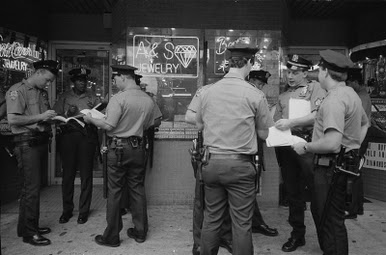
Clearly by the late 1980’s – five or six years after he began taking snapshots in New York, Weiwei’s eye is developing. He is more skilled with his camera. His social documentary sensibility is becoming more sophisticated. When discussing this with the Magnum photographer Susan Meiselas, she pointed to Ai’s 1989 photo of “Police Changing Shifts on the Bowery.” The framing of two clusters of police men and women – standing in front of a neon lit jewelry store, comparing notes on their paper work and filling out their ticket book – reflects a thought through moment, even if it’s a fast reaction. Ai is conscious of the significance. Composition, form, subject all work.
For my friend, Miriam Clifford, who has lived in Beijing for years, written a book on Chinese museums and introduced me to Three Shadows Gallery — designed by Ai Weiwei and publisher of this collection — the photo that stands out is the 1992 shot of Bill Clinton campaigning on the Lower East Side. He’s sitting in a car, face and hand waving out the window – at very close range to the camera. His hand is prominent as are the hands of other handlers around him…the focal lines created by the hands – an accident of close range action is potent. Clinton was not yet famous nor had he become president but Ai Weiwei was there, moving close in, recognizing the moment.

By 1989 – when Ai Weiwei was witnessing from a distance the Chinese government crushing the Tianmen Square protests – his New York City subject matter is broadening from documenting arrests at continuing AIDS protests to capturing street life on the Lower East Side.
Over the next few years his snapshots are becoming both more complicated in that they reveal a wider range of locales, they also reveal more complexity of thought and feeling on the faces of his Chinese friends (see Zhao Fei, Alifu & Zheang Baoqui at the CbGB Club 1993). We can see that Ai is putting on weight, growing what will become his trade-mark goatee, and playing Black Jack – which, according to one of his New York friends, would become an addiction. The collection ends with the shot of a pretty girl among happy go lucky young people picnicking in Tompkins Square Park. The protest is over…the city has changed and Ai will soon be leaving.
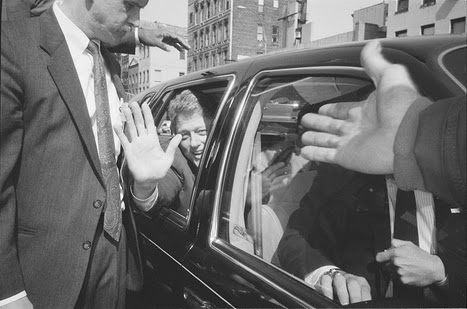
When I first headed to the Asia Society to see these photos for the first time, I thought that I might be comparing his take on New York with my own photographic take on Beijing. Comparing the eye of outsiders. But as soon as I started to look I realized such comparison was impossible. Ai had studied and mastered English. He spent more than ten years in the U.S. (I was illiterate and lived only one year in China), he didn’t work six days a week in a mind and soul-numbing job. I worked in the English Language Radio Beijing as a script “polisher” and teacher of broadcast journalism described in an article I wrote that experience, Who’s Out There? Radio Beijing in 1980 .
In fact Ai seemed to have an awful lot of time to drift around the city and snap thousands of photographs. He didn’t seem to have to work. Although he says in his interview that he worked in construction, as a gardener, house cleaner and a baby-sitter, we see no photographic evidence of this. His only photographs of “his working life” are of his stint as an extra in an opera – Turandot.
Ai’s Walls on the Lower East Side; My walls in Beijing…
However, I did find one photo that he took – of the walls of tenement apartments in the East Village with winter’s barren trees that was eerily evocative of a similar photo I took outside my apartment window in Beijing. One of the differences is that in Beijing, cabbages are drying in the window. Winter food.

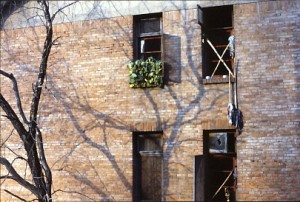
An artist in the making and shaping…
So the value of these photos is really their documentary quality for what they tell us about the East Village in the 80’s from its physical nature to its political conflicts and social expression. Equally important – they reveal an artist in the making and shaping.
“I started my own life (in New York) in which I was very clear about my own decisions. Before that, I was a student and all the decisions were made by common requirements – you study at school, finish your studies, and then try to become an artist. Then I realized that I am an artist and that it’s my life and that’s the way I choose to live. So I started to take some photos… I think I was much more relaxed with this situation and also more excited about this new life and this kind of attitude. You want to recognize your own way of life – its everyday happenings and the sense that is associated with you because then you’re more conscious about those things…Becoming more conscious of my life activities and that attitude was more important than producing some work.
Ai was also an artist moving from personal concerns to the social and political. It is a journey rooted in Ai Weiwei’s background. While his political consciousness may have matured in New York, along with his education in artistic hype, yet his questioning and critique of power and the establishment were there from early on. It is critical to remember that he grew up with a father who was persecuted and punished for his expression. When I interviewed Ai for the Village Voice article in 1986, he said “I’ve always been a rebel.” And the manifesto that he wrote together with the other dissident ex-pat artists at that time, calls out for more openness, freedom of creativity and expression in China:
“Freedom is the condition for creativity; only through creativity can we truly experience freedom…”
At a recent event at the Asia Society, Joan Cohen who wrote about contemporary art from China in her 1987 book, The New Chinese Painting, 1949-1986, read from a recently recovered copy of that 1986 manifesto. It ends with “The world is watching the future of Chinese Art!” How prophetic that statement would become. And Ai Weiwei has been a major reason we’ve kept watching. Now we have some clues about his personal and political journey. In classic Ai fashion, he recently made this photo collection – all 227 – available to everyone. He’s posted them on his Google+ site.
A version of this article is published on the webzine, Trans Asia Photography Review for the 4th quarter of 2011: http://bit.ly/w1aawg
Most photos courtesy of the artist, Three Shadows Gallery (Beijing) and Chambers Fine Arts (New York)
Thanks to Ellen Tolmie, photo editor of UNICEF, Susan Meiseles (Magnum), Miriam Clifford and Roland Flexner for taking time to share their insights about this collection with me.
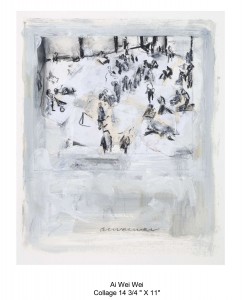
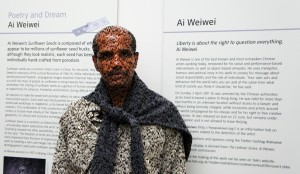
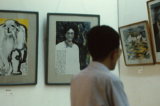
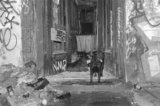
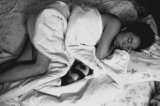
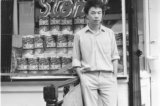

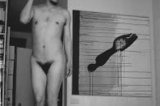
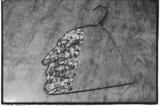
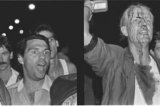
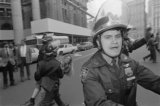
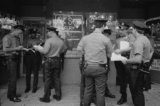
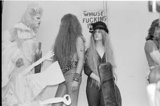
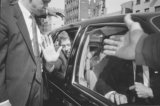
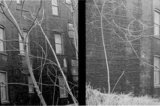
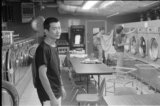
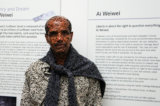

A terrific piece of writing and reporting which also looks great on the site. Who’s the designer…?
thanks Gail, interesting story told very well
Way to go Gail!
My husband was a designer-in-residence at the Central Academy of Fine Arts in Beijing for one year and I went over and stayed with him for 1 1/2 months. Saw incredible burgeoning of art and design there, including Olympic Games 2008 designer and his staff.
Cheers!
C I
Thank you Gail, and what an amazing coincidence that you were writing this great piece as we were at the Tate viewing Ai Weiwei’s “Sunflower Seeds”! We entered a room and were confronted with this mountain of grey seeds. Of course we thought they were real! We learned the 100,000 seeds were individually sculpted and hand-painted in Jingdezhen, the capital of the ceramics industry. It took 1,600 workers two years to create the work. Ai Weiwei hoped visitors would consider the symbolism of the seeds which refer -in protest- to Mao as the sun surrounded by the Chinese as sunflowers following his every move. Visitors to your site might enjoy this Ai Weiwei’s commentary on the work: http://www.tate.org.uk/modern/exhibitions/unileverseries2010/room3.shtm
Amazing and forthright commentary about an amazing and forthright artist!
Thank you Gail for your talent and insights.
Thanks to your thoughtful and well-written article, my eyes, ears and heart have discovered this amazing artist. I will continue to follow his work.
Thank you again.
An interesting personal, and historical perspective documenting the evolution of the complex humanitarian,philosophical,artist Ai Weiwei.
Thanks for a comprehensive article that gives a wonderful view of a complex, remarkable artistic personality. Cesar Chelala
Thank you for the extensive review on Ai Weiwei. The similarity of the photographs shows a very global cityscape!
A really excellent, thorough and thoughtful review that helps put Ai Weiwei’s career in perspective.
Great pictures. If he made it in New York in the 1980s he could face down the Chinese government